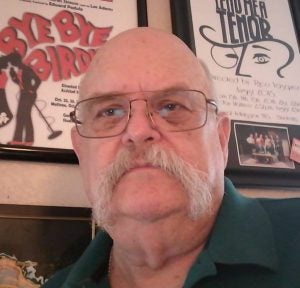And Now You Know: Bill and Helen’s houseboat
Published 1:44 pm Saturday, November 30, 2019

- And Now You Know
There was a time when houseboats were seen along the river and in bayous and sloughs around Orange. Some were used as floating weekend get-away places, some were full-time homes.
For years, a houseboat that had been pulled out of Adams Bayou sat on the bank of the bayou near the bridge across the bayou at MacArthur. The occupant of the houseboat on land was often seen sitting on the porch of the houseboat watching the traffic pass by.
Sam Hardin had pulled his houseboat out of the water and parked it next to the Log Cabin Liquor Store on Western Avenue.
Houseboats were of all sizes, there was no standard, the boats were, for the most part, built by their owners and built to fit their needs.
Bill and Helen Thrailkille, and their sons Billy and Danny were well known around Orange as “water people.” Bill and Helen were members of the nationally famous water ski club, Aqua Demons, and Debs. They had 15 trophies that attested to their skill on skis.
They started Billy early on skis. At the age of three, he was documented as the youngest water skier in the country and at four years old he was an accomplished barefoot skier. Danny was six years younger than Billy, but he was following Billy and doing very well on skis.
In addition to their love of water skiing, the family were avid fishermen.
One day, Bill came home from his job at American Bridge and said to Helen, “Let’s get a houseboat.” Helen said her first thought was “We can’t afford one.” Bill told her he would build it himself. He designed a houseboat 38 feet long and 18 feet wide mounted on two pontoons.
By the second week of August 1959, Bill had acquired eight sections of 36-inch pipe, constructed his own welding unit and welded the pipe into two 36 foot long pontoons. Bill launched them in the gully near their home on Dayton Street in West Orange.
He built the upper section of the houseboat near Bridge City.
By the end of October, the houseboat was ready to be used for the first time. Bill pushed it with his 14-foot boat to a spot near East Pass.
“We spent a wonderful weekend on the houseboat and had a wonderful time. The boys loved it more than we did,” said Helen.
The exterior and interior surfaces were made of marine plywood so as to be moisture-proof.
The interior was two rooms divided by a breakfast bar that separated the sleeping/living room from the kitchen. The bar also provided storage for food supplies, dishes, and cooking utensils.
The kitchen was equipped with a small propane stove and an icebox.
Six mattresses stacked against one wall in the living area provided seating during the day and along with a studio, bed provided sleeping spaces for eight at night.
On the roof was a 16X34 foot sundeck. There were wide porches on the front and back. There was a small bath and a battery-powered lighting unit.
On each side of the cabin was a three-foot-wide walkway with safety handrails. This provided a comfortable fishing space for 14 people.
Bill was a self-taught person, he was proficient in electrical, carpentry, and mechanical skills.
“I wanted a modern power plant and the easiest way to get one was to design it myself and build it with the materials I had on hand. I was just something I dreamed up,” said Bill.
The houseboat served the family as a summer home for fishing and during the winter hunting seasons became a hunting lodge on water.
“The advantage of a floating camp is that if you want to fish at West Bluff, Johnson’s Bayou, or on the other side of Sabine Lake, all you have to do is pull up the anchor and relocate. There are no limits to the number of fishing spots we can have,” said Bill.
Houseboats like the one Bill built are a rarity on and around the Sabine River these days. They are another part of Orange history that is gone.
“And now you know.”






